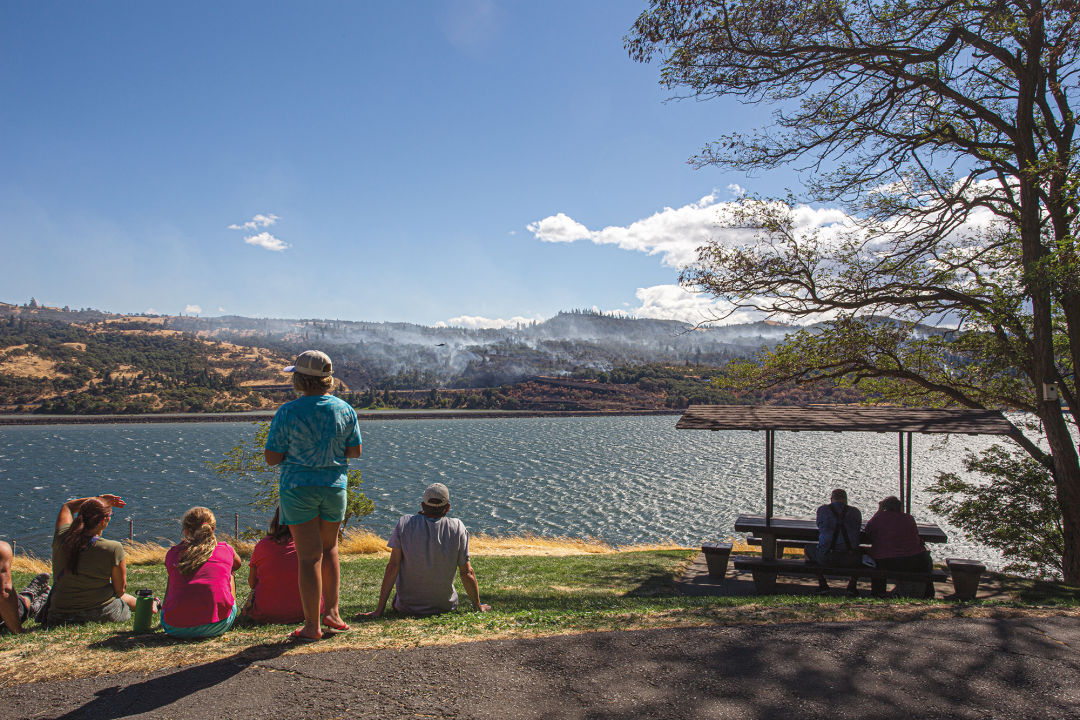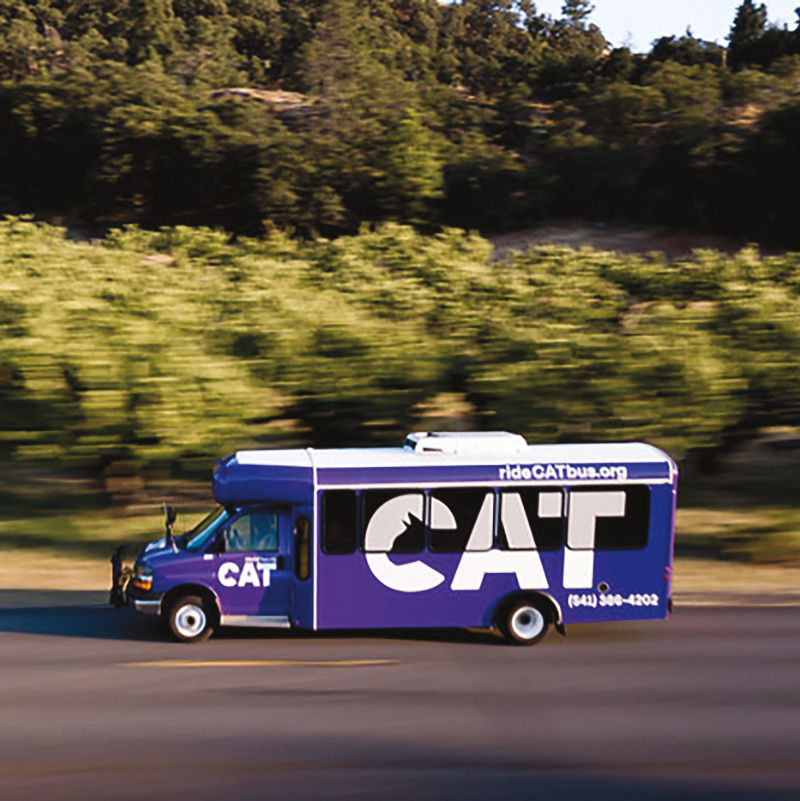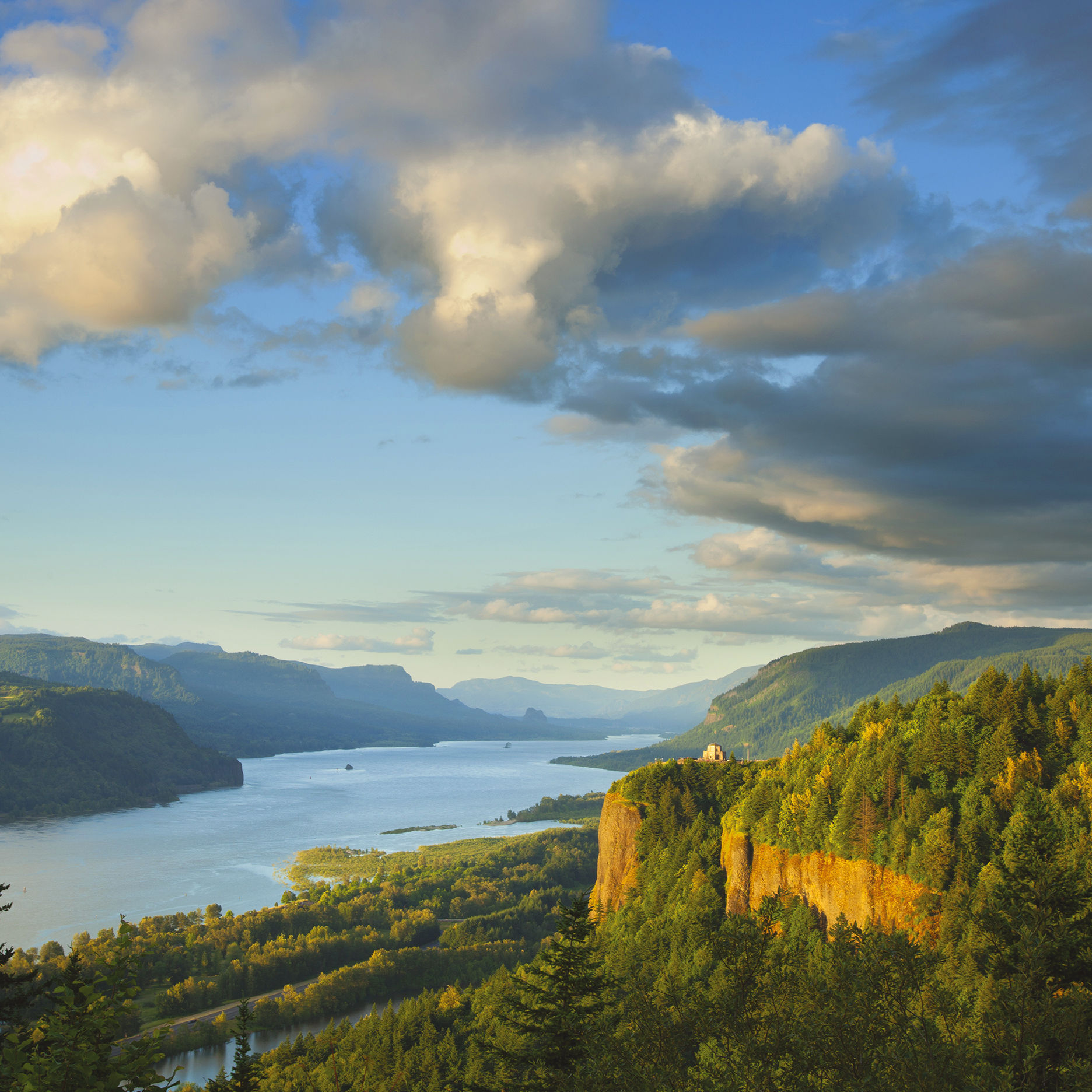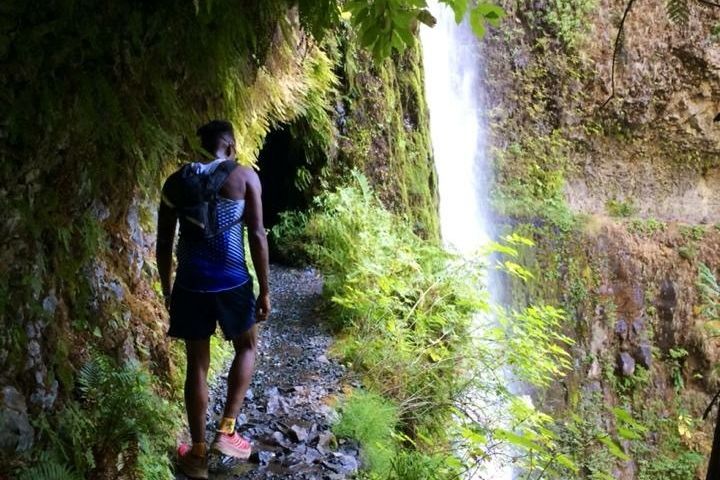What We Can Learn 5 Years After the Eagle Creek Fire

A view across the Columbia River of the smoldering fire in 2017
Image: Michael Novak
S
tan Hinatsu is careful when he talks about the Eagle Creek Fire. As the Forest Service recreation staff officer in the Gorge, he doesn’t want to sound too “callous” or “heretical” about the cyclical nature of fire in the West, but, in a moment of frankness, he says, “that’s what happens.”
It’s not to downplay the significance of the 2017 fire, which burned more than 48,000 acres of land in the Gorge and shut down more than 100 trails in the area. Nearly five years later, a handful of nearby trails remained closed, and the burn areas are still susceptible to rolling debris, falling trees, and landslides, particularly after high winds and heavy rain. But with centuries-old forests and climate change fueling drier winds and warmer weather, fires are a reality of life in the West. Certainly, he says, the conditions that fueled this fire—ignited by a firecracker—were abnormal, but whether human- or nature-caused, a fire of this kind was bound to happen.
Hinatsu characterizes the Eagle Creek Fire as a “stand replacement fire,” where flames kill off overstory and old-growth to make way for what’s essentially another forest that will grow from the ashes. In the Gorge, things look different, but “it’s not this black moonscape,” Hinatsu says. The Forest Service and its partners have focused on trail management, to ensure that paths are safe for hikers. As for landscape? Aside from removing invasive weed species, “everything that’s growing back is all natural,” he says.
“We have to remember that the forest is not static,” Hinatsu says. “It’s not a matter of if, it’s a matter of when stand replacement fires occur.... It doesn’t happen very often, but when it happens, it’s a big show.”
That big show has made a big impact in the way Oregonians view protecting the Gorge. For those who live in Eastern and Southern Oregon fires are fairly normal, Hinatsu says, but for Portlanders, many of whom view the national scenic area as a backyard treasure, a fire this close to home, at a place with such deep-rooted connections, ignited their protective instinct. (The experience offered a precursor to the September 2020 fires that lapped at the southern suburbs and blanketed the city in smoke—and were far more deadly and destructive.)
As the area continues to sprout new growth and trails reopen, Karen Davis of the Forest Service says she’s seeing more “unofficial ambassadors” reporting potentially hazardous conditions and remaining mindful about how they recreate.
“There’s a lot of love for these trails,” Davis says. “I really do feel like people are much more observant of their surroundings and of others, and are very protective of these trails.”












